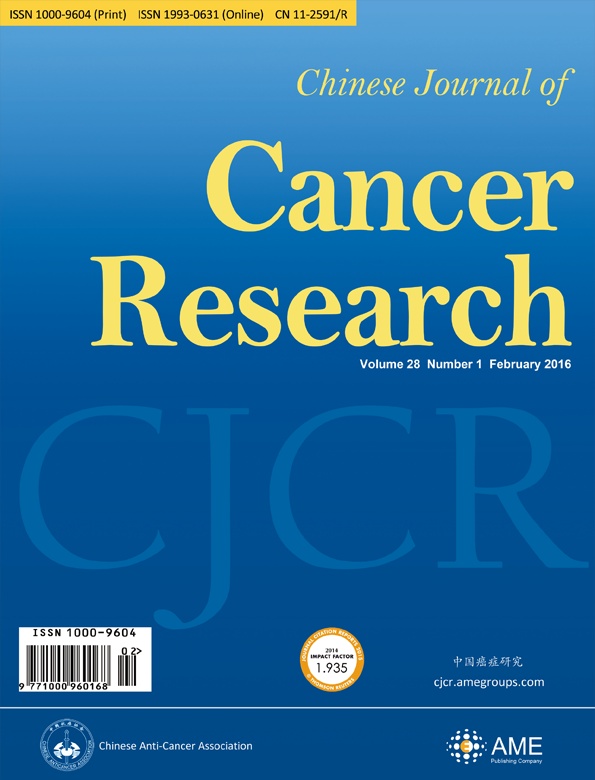A study on service capacity of primary medical and health institutions for cervical cancer screening in urban and rural areas in China
IF 7
2区 医学
Q1 ONCOLOGY
引用次数: 9
Abstract
Objective To provide a decision-making basis for sustainable and effective development of cervical cancer screening. Methods This cross-sectional study assesses the service capacity to conduct cervical cancer screening with a sample of 310 medical staff, medical institutions and affiliated township health centers from 20 county-level/district-level areas in 14 Chinese provinces in 2016. Results The county-level/district-level institutions were the main prescreening institutions for cervical cancer screening. More medical staff have become engaged in screening, with a significantly higher amounts in urban than in rural areas (P<0.05). The number of human papillomavirus (HPV) testers grew the fastest (by 225% in urban and 125% in rural areas) over the course of the project. HPV testing took less time than cytology to complete the same number of screening tasks in both urban and rural areas. The proportion of mid-level professionals was the highest among the medical staff, 40.0% in urban and 44.7% in rural areas (P=0.406), and most medical staff had a Bachelor’s degree, accounting for 76.3% in urban and 52.0% in rural areas (P<0.001). In urban areas, 75.0% were qualified medical staff, compared with 68.0% in rural areas, among which the lowest proportion was observed for rural cytology inspectors (22.7%). The medical equipment for cervical pathology diagnosis in urban areas was better (P<0.001). HPV testing equipment was relatively adequate (typing test equipment was 70% in urban areas, and non-typing testing equipment was 70% in rural areas). Conclusions The service capacity of cervical cancer screening is insufficient for the health needs of the Chinese population. HPV testing might be an optimal choice to fill the needs of cervical cancer screening given current Chinese medical health service capacity.中国城乡基层医疗卫生机构癌症筛查服务能力研究
目的为癌症筛查的可持续有效发展提供决策依据。方法本横断面研究以2016年中国14个省20个县(区)的310名医务人员、医疗机构和附属乡镇卫生院为样本,评估癌症筛查的服务能力。结果县级/区级机构是癌症筛查的主要预筛选机构。越来越多的医务人员参与了筛查,城市的筛查人数明显高于农村地区(P<0.05)。在项目过程中,人乳头瘤病毒(HPV)检测人数增长最快(城市增长225%,农村增长125%)。在城市和农村地区,HPV检测比细胞学检查花费更少的时间来完成相同数量的筛查任务。中级专业人员在医务人员中所占比例最高,城市为40.0%,农村为44.7%(P=0.406),大多数医务人员具有学士学位,城市为76.3%,农村为52.0%(P<0.001),其中农村细胞学检查的比例最低(22.7%),城市地区宫颈病理诊断的医疗设备较好(P<0.001),HPV检测设备相对充足(城市地区分型检测设备占70%,农村地区非分型检测仪器占70%)。结论癌症筛查服务能力不足以满足我国人群的健康需求。鉴于目前中国的医疗卫生服务能力,HPV检测可能是满足癌症筛查需求的最佳选择。
本文章由计算机程序翻译,如有差异,请以英文原文为准。
求助全文
约1分钟内获得全文
求助全文
来源期刊
自引率
9.80%
发文量
1726
审稿时长
4.5 months
期刊介绍:
Chinese Journal of Cancer Research (CJCR; Print ISSN: 1000-9604; Online ISSN:1993-0631) is published by AME Publishing Company in association with Chinese Anti-Cancer Association.It was launched in March 1995 as a quarterly publication and is now published bi-monthly since February 2013.
CJCR is published bi-monthly in English, and is an international journal devoted to the life sciences and medical sciences. It publishes peer-reviewed original articles of basic investigations and clinical observations, reviews and brief communications providing a forum for the recent experimental and clinical advances in cancer research. This journal is indexed in Science Citation Index Expanded (SCIE), PubMed/PubMed Central (PMC), Scopus, SciSearch, Chemistry Abstracts (CA), the Excerpta Medica/EMBASE, Chinainfo, CNKI, CSCI, etc.

 求助内容:
求助内容: 应助结果提醒方式:
应助结果提醒方式:


